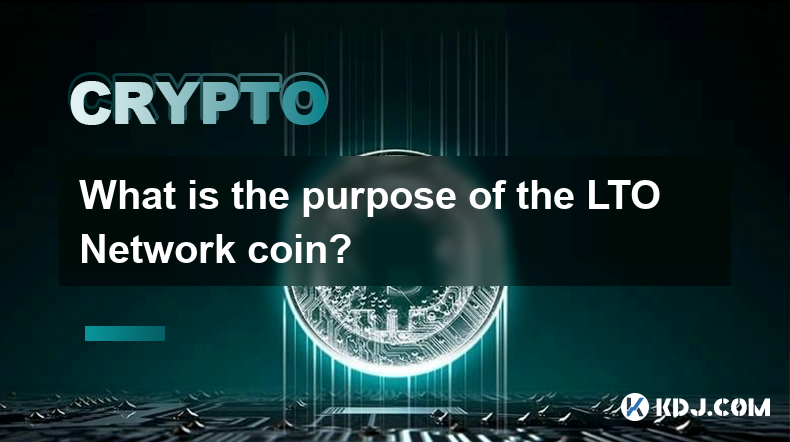-
 Bitcoin
Bitcoin $107,443.3008
-1.17% -
 Ethereum
Ethereum $2,494.2503
-0.63% -
 Tether USDt
Tether USDt $1.0003
0.00% -
 XRP
XRP $2.2496
2.23% -
 BNB
BNB $658.7569
0.63% -
 Solana
Solana $154.9826
1.94% -
 USDC
USDC $1.0000
0.01% -
 TRON
TRON $0.2799
1.07% -
 Dogecoin
Dogecoin $0.1659
-1.78% -
 Cardano
Cardano $0.5745
0.25% -
 Hyperliquid
Hyperliquid $39.7005
0.13% -
 Bitcoin Cash
Bitcoin Cash $519.5989
3.78% -
 Sui
Sui $2.7874
-2.40% -
 Chainlink
Chainlink $13.3762
-1.69% -
 UNUS SED LEO
UNUS SED LEO $9.0784
-0.64% -
 Avalanche
Avalanche $17.9846
-2.81% -
 Stellar
Stellar $0.2390
-0.06% -
 Toncoin
Toncoin $2.9028
0.25% -
 Shiba Inu
Shiba Inu $0.0...01147
-2.17% -
 Litecoin
Litecoin $86.6956
-1.27% -
 Hedera
Hedera $0.1508
-0.50% -
 Monero
Monero $322.6222
3.26% -
 Polkadot
Polkadot $3.4124
-2.99% -
 Dai
Dai $0.9999
0.00% -
 Bitget Token
Bitget Token $4.5434
-1.97% -
 Ethena USDe
Ethena USDe $1.0002
0.00% -
 Uniswap
Uniswap $7.1562
-2.61% -
 Aave
Aave $275.8830
-1.02% -
 Pepe
Pepe $0.0...09790
-4.04% -
 Pi
Pi $0.5018
-5.09%
What is the purpose of the LTO Network coin?
The LTO Network coin, central to the LTO Network's blockchain platform, serves as a payment medium, facilitates transactions, enables governance participation, and rewards validators, powering an ecosystem that ensures data integrity and identity verification.
Dec 26, 2024 at 02:32 pm

Key Points:
- The LTO Network coin (LTO) is a cryptocurrency that fuels the LTO Network, a blockchain platform designed for data integrity and identity verification.
- LTO Network enables enterprises to efficiently record and validate data, thus ensuring its authenticity and provenance.
- The LTO coin serves as the network's native token and is used to pay for various services, incentivize participation, and secure the blockchain.
What is the LTO Network Coin?
The LTO Network coin is built on the Ethereum blockchain and adheres to the ERC-20 token standard. It serves as the backbone of the LTO Network and plays a multifaceted role in its operations:
- Currency for Network Transactions: LTO coins are utilized to pay for network services such as data notarization, verification, and storage. Enterprises and individuals using the LTO Network require LTO coins to leverage its capabilities.
- Transaction Fees: When performing transactions on the LTO Network, whether notarizing, validating, or storing data, a small fee is required. These fees are typically paid in LTO coins.
- Governance: LTO coin holders can participate in the network's governance by voting on proposals that determine the platform's future development and direction.
- Rewards for Validators: Individuals who contribute to securing the network by running full nodes and participating in consensus algorithms are rewarded with LTO coins. This incentivization scheme encourages participation and ensures the reliability of the LTO Network.
Applications of the LTO Network Coin:
The LTO Network coin finds application in a wide range of scenarios where data integrity and identity verification are paramount. Some notable examples include:
- Supply Chain Management: Tracking the provenance and authenticity of goods throughout the supply chain by securely recording data that verifies the origin, movement, and ownership of products.
- Document Management: Digitizing and authenticating documents to prevent tampering and ensure their validity. LTO's notarization process creates an immutable record that demonstrates the document's authenticity and timestamp.
- Identity Verification: Establishing and verifying digital identities for individuals and organizations to prevent fraud, streamline onboarding processes, and ensure the authenticity of interactions.
Benefits of Using the LTO Network Coin:
Leveraging the LTO Network coin offers several advantages to users:
- Cost Efficiency: Compared to traditional methods of data validation and management, the LTO Network provides a cost-effective solution with transparent and predictable transaction fees.
- Enhanced Security: The LTO Network is built on a secure blockchain architecture that provides immutability and resistance to manipulation. Data stored on the network is highly secure and tamper-proof.
- Simplified Compliance: The LTO Network simplifies compliance with regulatory requirements related to data protection and identity verification. Its automated processes and tamper-proof record-keeping make it easier for organizations to meet compliance obligations.
FAQs:
Q: What is the purpose of the LTO Network coin?
A: The LTO Network coin fuels the LTO Network, a blockchain platform designed for data integrity and identity verification. Enterprises and individuals use LTO coins to pay for network services, incentivize participation, and secure the blockchain.
Q: How can I acquire LTO coins?
A: LTO coins can be purchased through cryptocurrency exchanges such as Binance, KuCoin, and Huobi Global.
Q: What is the value of an LTO coin?
A: The value of an LTO coin fluctuates based on market supply and demand. Real-time prices can be found on cryptocurrency exchanges or price tracking websites.
Q: What is the maximum supply of LTO coins?
A: The maximum supply of LTO coins is 400 million.
Q: How does the LTO Network ensure the security of its platform?
A: The LTO Network utilizes a Proof-of-Stake (PoS) consensus mechanism to secure its blockchain and validate transactions. Full node validators participate in the consensus process and are rewarded for their contributions.
Disclaimer:info@kdj.com
The information provided is not trading advice. kdj.com does not assume any responsibility for any investments made based on the information provided in this article. Cryptocurrencies are highly volatile and it is highly recommended that you invest with caution after thorough research!
If you believe that the content used on this website infringes your copyright, please contact us immediately (info@kdj.com) and we will delete it promptly.
- North Korea's Cyber Plot: Funding Weapons Development Through Virtual Heists
- 2025-07-01 10:30:12
- Undervalued Crypto Tokens: Compute Tokens Stealing the Show?
- 2025-07-01 10:50:12
- XRPL EVM Sidechain: Unleashing Smart Contracts and Cross-Chain DeFi on XRP
- 2025-07-01 10:30:12
- Archaeology Unearths Ancient Coin Moulds: A Glimpse into Indo-Greek Trade in Gujarat
- 2025-07-01 10:50:12
- MAGACOIN FINANCE: Altcoin Returns & the Early Adoption Advantage
- 2025-07-01 11:10:12
- Neo Pepe: Is This Presale the Crypto Opportunity You've Been Waiting For?
- 2025-07-01 11:10:12
Related knowledge

How to customize USDT TRC20 mining fees? Flexible adjustment tutorial
Jun 13,2025 at 01:42am
Understanding USDT TRC20 Mining FeesMining fees on the TRON (TRC20) network are essential for processing transactions. Unlike Bitcoin or Ethereum, where miners directly validate transactions, TRON uses a delegated proof-of-stake (DPoS) mechanism. However, users still need to pay bandwidth and energy fees, which are collectively referred to as 'mining fe...

USDT TRC20 transaction is stuck? Solution summary
Jun 14,2025 at 11:15pm
Understanding USDT TRC20 TransactionsWhen users mention that a USDT TRC20 transaction is stuck, they typically refer to a situation where the transfer of Tether (USDT) on the TRON blockchain has not been confirmed for an extended period. This issue may arise due to various reasons such as network congestion, insufficient transaction fees, or wallet-rela...

How to cancel USDT TRC20 unconfirmed transactions? Operation guide
Jun 13,2025 at 11:01pm
Understanding USDT TRC20 Unconfirmed TransactionsWhen dealing with USDT TRC20 transactions, it’s crucial to understand what an unconfirmed transaction means. An unconfirmed transaction is one that has been broadcasted to the blockchain network but hasn’t yet been included in a block. This typically occurs due to low transaction fees or network congestio...

How to check USDT TRC20 balance? Introduction to multiple query methods
Jun 21,2025 at 02:42am
Understanding USDT TRC20 and Its ImportanceUSDT (Tether) is one of the most widely used stablecoins in the cryptocurrency market. It exists on multiple blockchain networks, including TRC20, which operates on the Tron (TRX) network. Checking your USDT TRC20 balance accurately is crucial for users who hold or transact with this asset. Whether you're sendi...

What to do if USDT TRC20 transfers are congested? Speed up trading skills
Jun 13,2025 at 09:56am
Understanding USDT TRC20 Transfer CongestionWhen transferring USDT TRC20, users may occasionally experience delays or congestion. This typically occurs due to network overload on the TRON blockchain, which hosts the TRC20 version of Tether. Unlike the ERC20 variant (which runs on Ethereum), TRC20 transactions are generally faster and cheaper, but during...

The relationship between USDT TRC20 and TRON chain: technical background analysis
Jun 12,2025 at 01:28pm
What is USDT TRC20?USDT TRC20 refers to the Tether (USDT) token issued on the TRON blockchain using the TRC-20 standard. Unlike the more commonly known ERC-20 version of USDT (which runs on Ethereum), the TRC-20 variant leverages the TRON network's infrastructure for faster and cheaper transactions. The emergence of this version came as part of Tether’s...

How to customize USDT TRC20 mining fees? Flexible adjustment tutorial
Jun 13,2025 at 01:42am
Understanding USDT TRC20 Mining FeesMining fees on the TRON (TRC20) network are essential for processing transactions. Unlike Bitcoin or Ethereum, where miners directly validate transactions, TRON uses a delegated proof-of-stake (DPoS) mechanism. However, users still need to pay bandwidth and energy fees, which are collectively referred to as 'mining fe...

USDT TRC20 transaction is stuck? Solution summary
Jun 14,2025 at 11:15pm
Understanding USDT TRC20 TransactionsWhen users mention that a USDT TRC20 transaction is stuck, they typically refer to a situation where the transfer of Tether (USDT) on the TRON blockchain has not been confirmed for an extended period. This issue may arise due to various reasons such as network congestion, insufficient transaction fees, or wallet-rela...

How to cancel USDT TRC20 unconfirmed transactions? Operation guide
Jun 13,2025 at 11:01pm
Understanding USDT TRC20 Unconfirmed TransactionsWhen dealing with USDT TRC20 transactions, it’s crucial to understand what an unconfirmed transaction means. An unconfirmed transaction is one that has been broadcasted to the blockchain network but hasn’t yet been included in a block. This typically occurs due to low transaction fees or network congestio...

How to check USDT TRC20 balance? Introduction to multiple query methods
Jun 21,2025 at 02:42am
Understanding USDT TRC20 and Its ImportanceUSDT (Tether) is one of the most widely used stablecoins in the cryptocurrency market. It exists on multiple blockchain networks, including TRC20, which operates on the Tron (TRX) network. Checking your USDT TRC20 balance accurately is crucial for users who hold or transact with this asset. Whether you're sendi...

What to do if USDT TRC20 transfers are congested? Speed up trading skills
Jun 13,2025 at 09:56am
Understanding USDT TRC20 Transfer CongestionWhen transferring USDT TRC20, users may occasionally experience delays or congestion. This typically occurs due to network overload on the TRON blockchain, which hosts the TRC20 version of Tether. Unlike the ERC20 variant (which runs on Ethereum), TRC20 transactions are generally faster and cheaper, but during...

The relationship between USDT TRC20 and TRON chain: technical background analysis
Jun 12,2025 at 01:28pm
What is USDT TRC20?USDT TRC20 refers to the Tether (USDT) token issued on the TRON blockchain using the TRC-20 standard. Unlike the more commonly known ERC-20 version of USDT (which runs on Ethereum), the TRC-20 variant leverages the TRON network's infrastructure for faster and cheaper transactions. The emergence of this version came as part of Tether’s...
See all articles

























































































